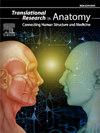使用逻辑回归和线性回归模型的性别决定和身高估计:泰国东北部人群胫骨和腓骨的特定研究
Q3 Medicine
引用次数: 0
摘要
从骨骼遗骸中确定性别和估计身高是法医人类学分析的基本组成部分,特别是当碎片遗骸限制了传统方法时。本研究旨在通过胫骨和腓骨测量建立泰国东北部人群的特定标准。材料和方法该研究检查了200具已确认的成人骨骼(男性100具,女性100具)。测量双侧9个骨测量参数(6个胫骨和3个腓骨)。对所有标本进行了年龄、性别和身材的系统记录。结果单变量logistic回归模型的性别判别准确率高达87.50%,其中胫骨近端骨骺宽度最大具有最高的判别能力。多变量方法可以显著提高左胫骨参数的准确性,达到91.30%,年龄相关的变化显示45-59岁年龄组的最佳结果。腓骨测量的准确性较低,但仍保持统计学意义,特别是腓骨重量。对于身高估计,最大胫骨长度是最可靠的单因素预测因子(SEE = 6.66 cm, R = 0.572),而包含胫骨和腓骨互补参数的多因素方程提高了准确性。年龄分层分析表明,在老年队列中准确性降低,尤其是腓骨测量。研究结果与先前的研究一致,同时反映了泰国东北部人群独特的独特模式,具有特定的遗传血统。这些特定人群的方程可以提高法医调查的生物分析能力,当传统的方法是不适用的,由于碎片遗骸。本文章由计算机程序翻译,如有差异,请以英文原文为准。
Sex determination and stature estimation using logistic and linear regression models: A population-specific study of tibia and Fibula in Northeastern Thais
Background
Sex determination and stature estimation from skeletal remains are basic components of forensic anthropological analysis, particularly when fragmentary remains limit conventional approaches. This study aimed to establish the population-specific standards for Northeastern Thais using tibial and fibular measurements.
Materials and methods
The study examined 200 identified adult skeletons (100 males, 100 females). The nine osteometric parameters (six tibial and three fibular) were measured bilaterally. All specimens were systematically documented for age, sex, and stature.
Results
For sex determination, the results showed that univariate logistic regression models achieved the accuracy rates up to 87.50 %, with maximum proximal epiphyseal breadth of the tibia demonstrating highest discriminatory power. Multivariate approaches could significantly enhance the accuracy to 91.30 % for left tibial parameters, with age-related variation revealing optimal results in the 45–59 age group. Fibular measurements showed lower accuracy but still maintained statistical significance, particularly for fibular weight. For stature estimation, the maximum tibial length served as the most reliable univariate predictor (SEE = 6.66 cm, R = 0.572), while multivariate equations incorporating complementary parameters from both tibia and fibula improved the accuracy. Age-stratified analysis demonstrated diminished accuracy in older cohorts, especially for fibular measurements.
Conclusion
The findings align with the previous studies while reflecting distinct patterns unique to Northeastern Thai populations with their specific genetic ancestry. These population-specific equations can enhance the biological profiling capabilities in forensic investigations when the conventional methods are inapplicable due to fragmentary remains.
求助全文
通过发布文献求助,成功后即可免费获取论文全文。
去求助
来源期刊

Translational Research in Anatomy
Medicine-Anatomy
CiteScore
2.90
自引率
0.00%
发文量
71
审稿时长
25 days
期刊介绍:
Translational Research in Anatomy is an international peer-reviewed and open access journal that publishes high-quality original papers. Focusing on translational research, the journal aims to disseminate the knowledge that is gained in the basic science of anatomy and to apply it to the diagnosis and treatment of human pathology in order to improve individual patient well-being. Topics published in Translational Research in Anatomy include anatomy in all of its aspects, especially those that have application to other scientific disciplines including the health sciences: • gross anatomy • neuroanatomy • histology • immunohistochemistry • comparative anatomy • embryology • molecular biology • microscopic anatomy • forensics • imaging/radiology • medical education Priority will be given to studies that clearly articulate their relevance to the broader aspects of anatomy and how they can impact patient care.Strengthening the ties between morphological research and medicine will foster collaboration between anatomists and physicians. Therefore, Translational Research in Anatomy will serve as a platform for communication and understanding between the disciplines of anatomy and medicine and will aid in the dissemination of anatomical research. The journal accepts the following article types: 1. Review articles 2. Original research papers 3. New state-of-the-art methods of research in the field of anatomy including imaging, dissection methods, medical devices and quantitation 4. Education papers (teaching technologies/methods in medical education in anatomy) 5. Commentaries 6. Letters to the Editor 7. Selected conference papers 8. Case Reports
 求助内容:
求助内容: 应助结果提醒方式:
应助结果提醒方式:


